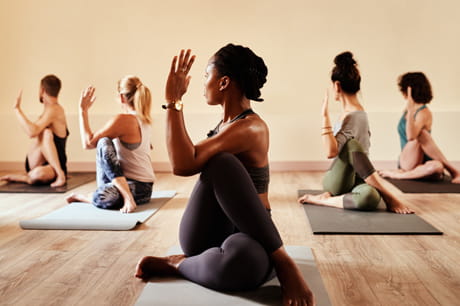The pros and cons of menstrual cups
See if this eco-friendly alternative to pads and tampons is right for you.
Tired of bulky, uncomfortable period products that need to be changed every few hours to avoid dreaded leaks? Maybe you’re on a mission to reduce your impact on the planet (or save some of your hard-earned cash).
Menstrual (or period) cups may just be your answer.
Period cups have become a popular alternative to single-use tampons and pads. But are they right for you? Keep reading to learn the pros and cons, and get some helpful tips from Molly Fragale, CNM, certified nurse-midwife at Geisinger Bloomsburg Hospital.
What are menstrual cups and how do they work?
These flexible cups made of medical-grade silicone or rubber are inserted inside your vagina during your period. And unlike pads or tampons, which absorb your menstrual flow, period cups collect the blood.
“At first, you may have to try a few different folding methods to get it inserted correctly,” says Ms. Fragale. “To help make the process more comfortable, try using water-based lubricant or wetting your cup first. Once you get it placed correctly, you shouldn’t feel it.”
Depending on your flow, most period cups can be worn up to 12 hours (great for overnight protection) — and most are reusable. But read the instructions that come with your cup for specifics.
“When it’s time to empty the cup, wash your hands thoroughly first,” explains Ms. Fragale. “Then gently remove it, wash with mild soap and water and reinsert it. Some brands even make soap specifically for cleansing your menstrual cup, but a fragrance-free soap often does the trick.”
At the end of your cycle, you can sterilize your reusable cup in boiling water, let it dry and store it away until your next cycle. “Don’t reuse a disposable menstrual cup as this can put you at risk for infection,” adds Ms. Fragale.
Who can use a menstrual cup?
Most people can use a menstrual cup as soon as they get their period. But cups aren’t one-size-fits-all, so it may take some trial and error to find the one that fits you best.
“Generally, you’ll select a cup based on your age and whether you’ve given birth vaginally,” says Ms. Fragale. “Most brands offer different sizes and education to help you find your right fit.”
If you have allergies, be sure to check the product label before use. Most cups are made from latex-free materials, but for some people, silicone or rubber may cause irritation.
And if you have a medical condition — like uterine fibroids, vaginismus (pain during penetration) or endometriosis — you may find more traditional period products more comfortable.
“People with vaginal injuries and those who have just given birth should avoid inserting anything into the vagina,” adds Ms. Fragale.
The pros
Many people make the switch to period cups because they’re:
- Budget friendly: Pay a one-time price for a reusable cup versus buying pads and tampons each month.
- Eco-friendly: Most cups are reusable, lasting for months to even years (with proper care). This means less disposable period products ending up in landfills.
- Safer than tampons: You’re not at risk of toxic shock syndrome, a rare infection associated with tampon use. Despite this, be sure to wash your hands (and your cup) well to avoid risk of infection.
- Need to be changed less: Menstrual cups hold a surprising amount of blood — much more than pads and tampons. This means you don’t have to change them as often.
- Good protection against leaks: When inserted correctly, period cups form a seal to your vaginal walls, reducing your chances of leaking.
The cons
There are some potential downsides to menstrual cups, but most can be resolved with some patience and practice. Drawbacks may include:
- There’s a learning curve: Using a period cup takes some practice — and you may not get it right on the first try. Try using backup protection, like a pad or eco-friendly period underwear, to avoid leaks until you nail down your insertion technique.
- Difficult to insert: There are different ways to insert one — and it may take a few tries to find the technique that works for you.
- Removal takes practice: Most period cups have a stem, but you don’t want to yank the stem to remove them. Instead, use the stem as your guide to find the base of the cup. Pinch the base to release the suction against your vaginal walls and gently pull or wiggle it out — allowing the blood to empty in the toilet. Bonus tip: try removing your cup in the shower, especially in the beginning.
- There’s a chance of infection: To avoid this, wash your hands and menstrual cup well before and after use. And be sure to store it properly — most come with a bag or pouch for storage.
The best way to know if a menstrual cup is right for you is by doing some research and giving it a try. “If you’re not sure, talk with your women’s health provider,” adds Ms. Fragale. “And if you have difficulty with insertion or any pain at all, see your doctor before trying again.”
Next steps:
Meet Molly Fragale, CNM
5 things to know about Pap smears
Where’d my libido go? 4 causes of low sex drive in women

